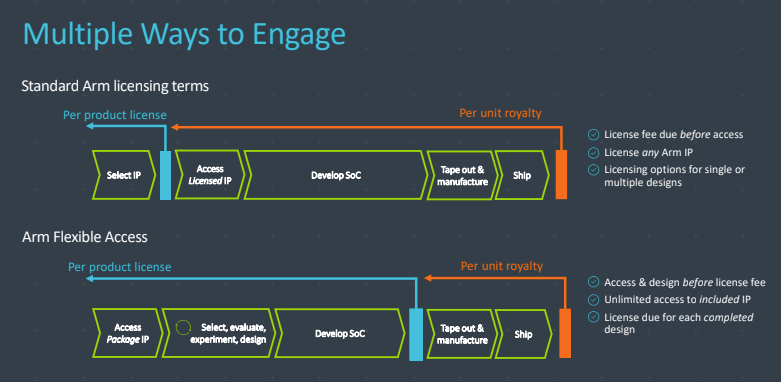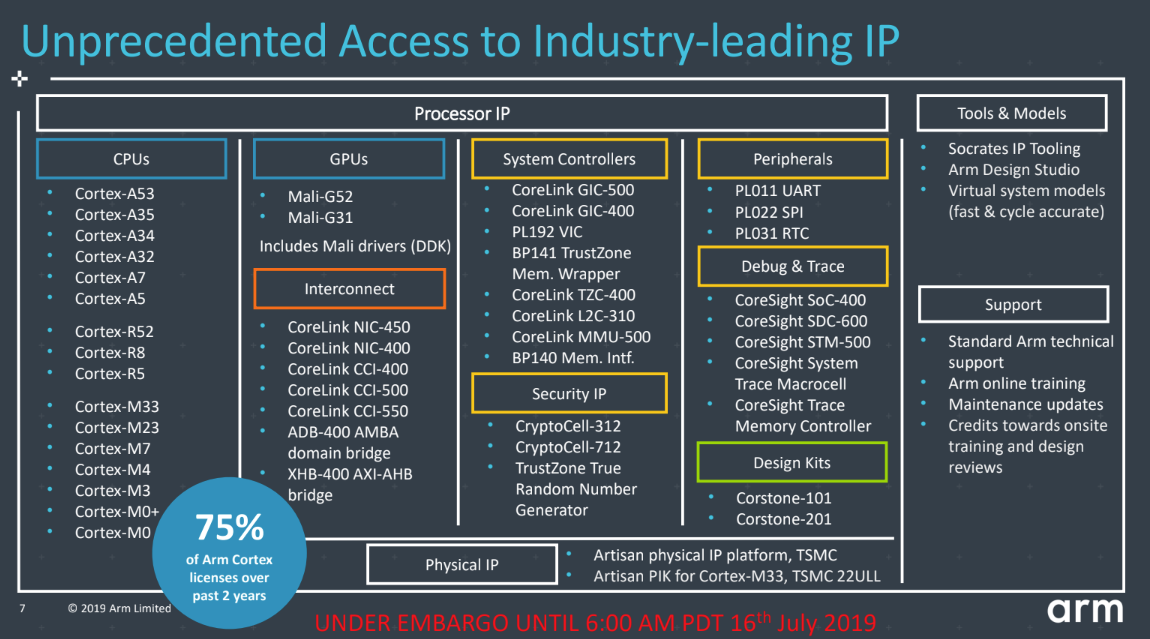The content below is taken from the original ( Arm’s new licensing option lets its partners experiment and test for free before they pay), to continue reading please visit the site. Remember to respect the Author & Copyright.
Arm today launched Flexible Access, a new licensing scheme in addition to its existing model, that will make it easier for startups to gain access to a wide range of Arm’s intellectual property (IP) without any upfront licensing costs.
Intellectual property licensing schemes for chips may not strike you as the most exciting thing. But as the number of companies that are building their own silicon, often for very specialized use cases, having access to the IP from companies like Arm is something that more companies than ever a looking to have. Until now, the only way to get access to Arm’s IP was to select the products you wanted to license upfront. That works for large companies that know exactly what they want, but for smaller companies, that’s a bit of a barrier, given that they are likely still trying to figure out what exactly they need.
Under the Flexible Access terms, partners get access to the IP and only pay a per-unit royalty fee once they go into production. Under the existing scheme, license fees were due before partners could access the IP.
“The reason we’re doing this is because we see that the industry is evolving quite significantly — lots of transformation that’s happening, new companies coming into doing custom silicon,” Dipti Vachani, Arm’s SVP and GM of its automotive and IoT business, told me. “We believe that enabling this is easy access to IP and experimentation allows for the growth and the usage of our IP across the trillion connected devices.”
Vachani stressed that the company believes that this move will allow a whole range of new companies to use Arm’s IP portfolio since it significantly lowers the barrier of entry.
“This allows for a lower barrier to entry for for anyone. It’s very straightforward. You go online, there’s a process to do so,” Vachani said. “And smaller companies that may not have the infrastructure that our traditional silicon companies have had — this makes this really simple and easy for them.”
That flexibility, the company hopes, will result in even more companies using its IP and hence driving more revenue as those companies sell their products. “I expect that this will
increase the scale,” Vachani said. “It’ll allow for the trillion connected devices that we internally talk about at ARM and enable those trillion connected devices to be on Arm and it builds on top of the ecosystem that we already have and that it will absolutely be accretive to our company and our business.”
Flexible Access includes about 75 percent of all Arm Cortex licenses from the past two years. This includes CPU architectures from the Arm Cortex A, R and M families, in addition to select GPUs, interconnects, security IP, system controllers and more — essentially everything you need to build your own system. It also includes software development tools and additional tools and models for building systems on a chip.
You’ll notice, though, that some of the newest high-end CPU architectures are not part of this license. This, Vachani said, is due to the fact that the companies that need a high-performance CPU — say an A75 — typically know what they are creating from the outset.
Flexible Access, it’s worth stressing, does not replace Arm’s existing licensing system. The two will live in parallel. “What we did here is we looked at what is necessary for these endpoints in the IoT market […]. That’s where there’s a disruption happening and where the transformation is happening. We looked at the portfolio of IP that’s absolutely necessary for that kind of testing in that plane. […] When you look at the low end, that’s where all the experimentation is – the mid- and low-end.”
The program is now live and available to all chip companies that want to move to this licensing model, no matter whether they are a large chipmaker or a startup that is only dipping its toes into this business.






